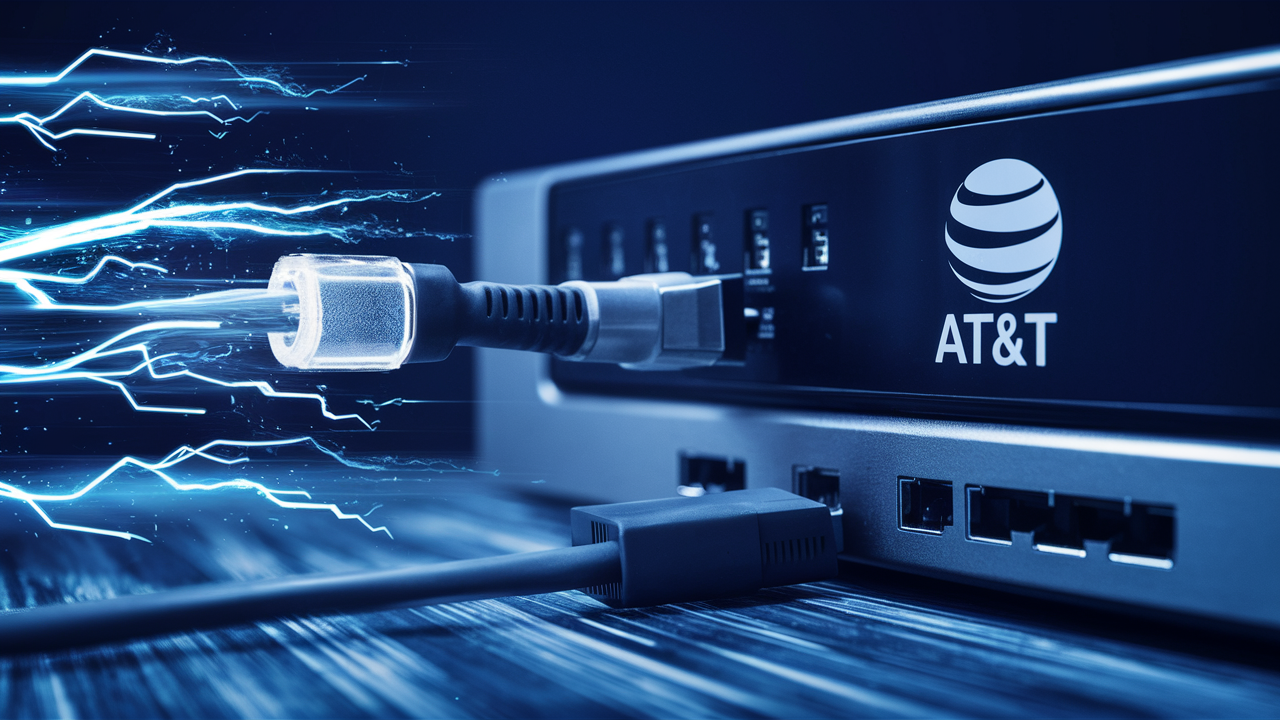Is ATT fiber a wired connection?

Fiber is a telecom product that delivers Internet services via fiber optic cables and AT&T Fiber Internet is one of them. Indeed, AT&T fiber could be categorized as a wired internet connection.
What is Fiber Internet?
Connected using fiber optic cables—thin strands of flexible glass or plastic capable of carrying light signals— Fiber internet, often known as fiber optic internet, is Fiber optic cables provide much more bandwidth than copper connections, so Fiber Optic internet speed many times quicker.
ATT's new fiber internet service works in a manner that involves connecting a home or business directly to fiber optic cable. This offers a wired, direct, and very high-speed link directly connected to the internet backbone. Some key advantages of fiber internet include.
- Very high speed – the availability of AT&T Internet fiber means that the internet speeds in your home can be up to 1 Gbps. It should be noted that the rate of this internet is about 10-100 times higher than average cable or DSL internet.
- Fast speeds – Compared to copper, fiber offers very fast data transmission speeds with minimal delay. This is excellent for gaming, video calling, and for watching videos online.
- Reliability: Fiber optic cables are not prone to direct interference as compared to copper cables. It is very effective in transmitting the data signal without much loss across the long distance.
- Capacity – Fiber has a virtually limitless amount of bandwidth, and can achieve incredibly fast speeds now and in the future as internet traffic increases.
AT&T Fiber Connection Type
The fiber optic cable from AT&T that is installed in your house or business has to be connected to the in-premise networking gear. There are two main options for AT&T fiber connections
Ethernet Connection:
In an ethernet handoff, the fiber cable coming from outside is connected to a small box called the Optical Network Terminal (ONT) within a house. The ONT turns the light signal from the fiber cable into ethernet where it can be physically connected to a router or a computer via a cable. This wired connection fosters the gigabit speeds that are provided by the AT&T fiber network.
Wireless Connection:
Even some of the basic AT&T fiber plans also let you use a Wireless Gateway router for a wireless handoff. This router has an ONT unit assembled in it which transmits the received fiber optic light signal as a WiFi networking signal. In the case of a wireless gateway, WiFi is used to make the connection instead of having to plug the device into the fiber terminal with a wire. In the case of WiFi, Internet speeds are usually faster but not as fast as directly connected fiber ethernet.
So in conclusion – this means that ATT fiber Internet does indeed require a physical fiber optic line into the dwelling or commercial establishment. What that fiber connection looks like as it gets to the devices can look different – wired using the Ethernet cable or wirelessly through the WiFi. However, AT&T fiber begins with a wired fiber line directly from the internet service provider or ISP. This fixed fiber connection allows for the ultra-high download and upload speeds that are characteristic of fiber.
It is important to note that a wired connection is much more significant than a wireless connection.
While WiFi certainly has its benefits, a wired internet connection is still the gold standard when it comes to speed, reliability, and security: While WiFi certainly has its benefits, a wired internet connection is still the gold standard when it comes to speed, reliability, and security:
Faster Speeds – A wired ethernet connection can connect to the entire throughput capacity of an AT&T fiber line. WiFi on the other hand offers a slower speed given the distance/interference issues associated with it.
Higher Dependability – This is because WiFi signals can be easily interfered with and even disconnected occasionally. This is not an issue with wired connections.
Improved Security - Comparing the two, data transmitted through the use of ethernet cables is more secure than through the use of Wi-Fi signals. Some of the tips include making sure that computers and servers are connected by wire.
Interference – Microwaves, cordless phones, walls as well as other objects/y-radio waves can affect WiFi. Ethernet cables aren't affected.
For these reasons, even when AT&T fiber can offer wireless networking, ethernet cables should be employed to connect the computers, smart home hubs, network drives, and other devices to the fiber gateway or ONT box as much as possible.
Cabling for Wired Connections in an AT&T Smart Home
For the best experience that comes with the fiber connection AT&T offers, it is wise to have a wired home connection. This means connecting devices like
- Smart home hubs
- Gaming consoles
- Digital video recorders (DVRs) are also referred to as digital multimedia boxes or streaming set-top boxes.
- Desktop computers
- Network-attached storage drives
When you plug these devices into an AT&T fiber gateway or ONT box, you weave a super fast, rock-solid, backbone into your connected home. WiFi is still available for use with mobile devices, tablets, laptops, and any device that can connect to the internet.
Of course, if your current home is already wireless-only, moving to a structured wired home network is not as complicated as you might imagine. The Ethernet cables can be installed by running them through walls, along the baseboard, under carpets, or even around windows if they’re outside. One can hire an expert to tuck in cables neatly and at the same time, have super-fast fiber connection in whichever place one desires.
Do I Need to be Wired into AT&T Fiber?
AT&T fiber does not necessarily need to be wired and the internet speed offered by this internet service provider is fast. The help of wireless gateways allows having a fully wireless configuration of the system. However, to get the most out of the fiber-optic cable and the connection speed provided by the gigabit, it is always advisable to use a wired connection wherever possible. This aids in allowing each device to run at its full potential and offers a stable, efficient experience over a whole smart house or office.
Conclusion – Contrary to what one might expect, AT&T’s fiber internet does require the physical stringing of fiber optic cables to the building. WiFi may be more convenient than cabling the campus but the real transfer of bandwidths is best addressed by the use of ethernet cables. A pro installer can then twist and wire devices through walls along with the ceilings back to an AT&T gateway or an ONT box. When you have a wired home network set up correctly, you’ll get the throughput and ease of use of your high-speed AT&T fiber-optic service.
Upgrade to faster, more reliable AT&T Fiber Internet today! Call us at +1 844-905-5002 and get connected with speeds that keep you ahead.





